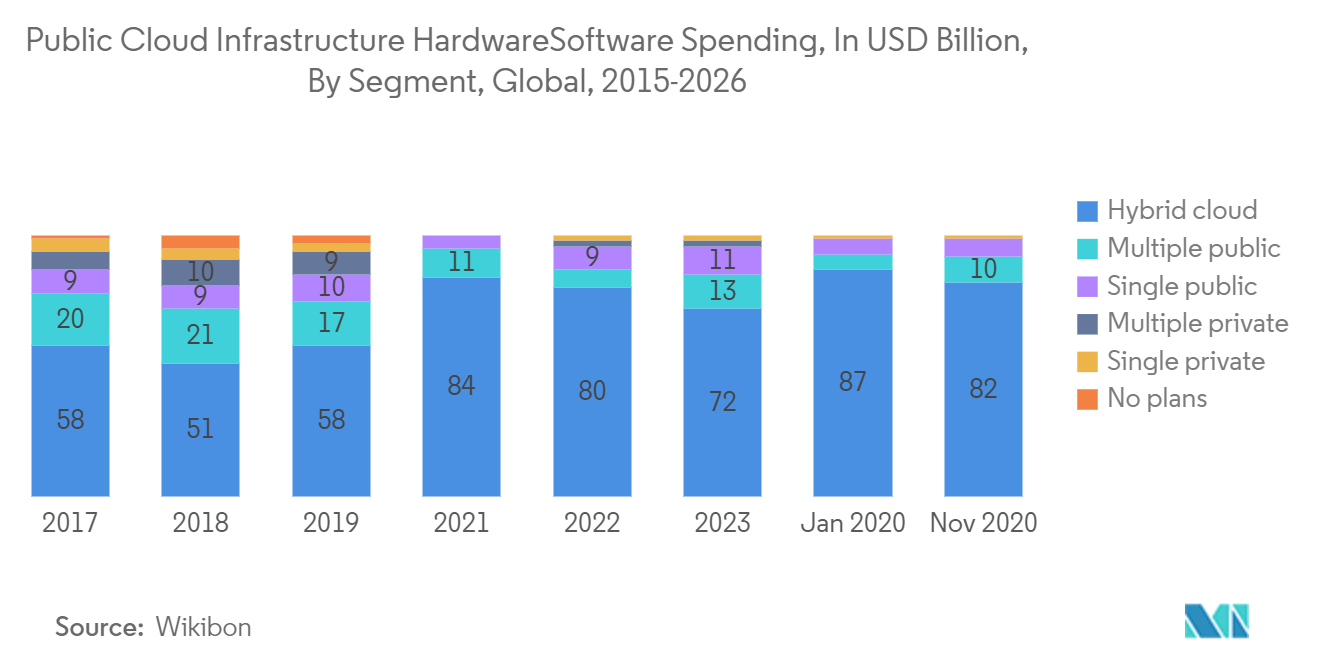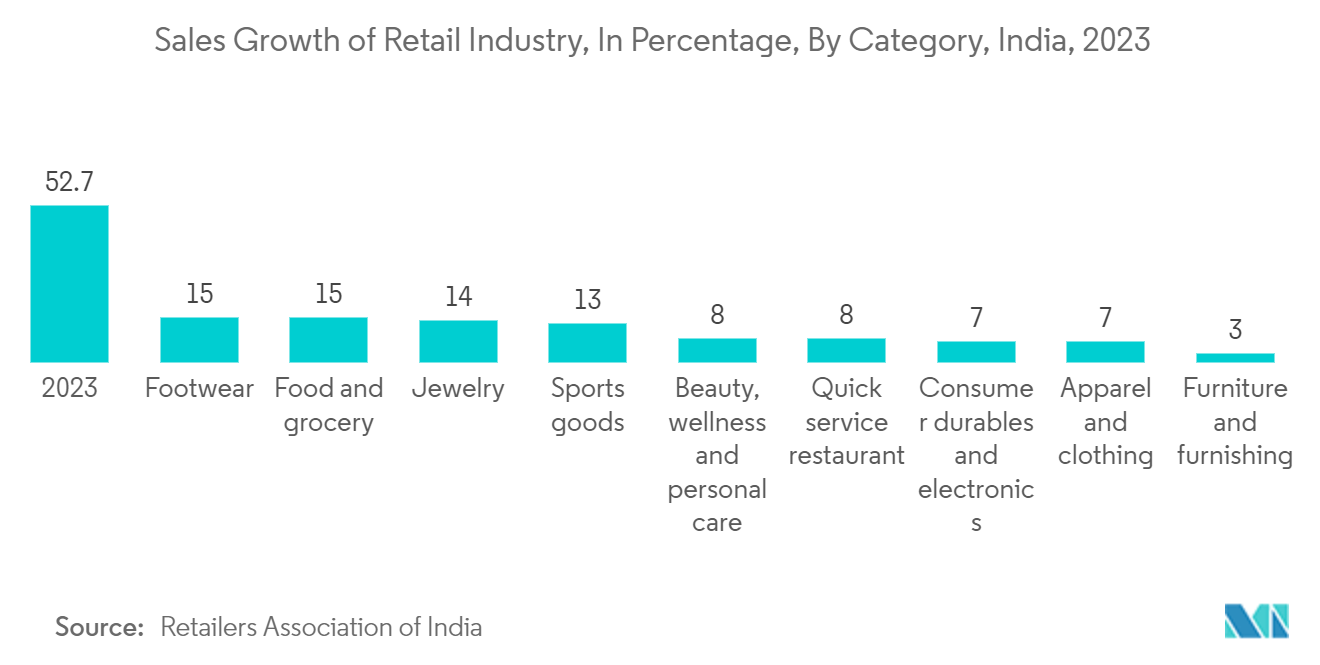Market Trends of Asia Pacific Enterprise Collaboration Industry
Increasing Adoption of Cloud-based Deployment Drive the Market
- Enterprise collaboration solutions have evolved into foundational business communications and collaboration components. The expansion of the cloud has improved accessibility to office collaboration tools by removing the management requirements of on-premises equipment. The development of remote employment opportunities has boosted the popularity of cloud collaboration. The cloud allows geographically dispersed employees to collaborate with coworkers in real-time.
- Yotta claims that a survey carried out in 2020 revealed that about 37% of Indian businesses had their digital infrastructure housed in the cloud. By 2022, it was predicted that more than 60% of the infrastructure would be in the cloud, negating the need for captive availability and third-party co-location.
- Cloud-based services have become a viable option for assisting an organization to navigate risks. Because of cloud-based EFSS solutions, the system's IT infrastructure no longer requires as much capital to be updated and improved. The investment risks becoming outdated before it generates a return due to the rapid updating of electronic and IT technology.
- The steady increase in data generated is anticipated to serve as the primary driver of cloud-based workload deployment. Many different industry verticals deal with a massive amount of data. A data center is better suited for a company that needs to run various applications and complex workloads involving enterprise collaboration.
- In addition, many nations have laws or policies that specify certain types of data that must stay within the boundaries of a particular area or country. Data residency laws have been established in China, Australia, Hong Kong, and Singapore for information such as government documents and medical records. Furthermore, many professional associations, including those in accounting, finance, law, mortgage brokers, and banking, have professional standards for their members that cover data residency requirements to control how cloud service providers use the information and keep it within specific territorial jurisdictions.
- The businesses also emphasize cognitive collaboration, integrating cognitive learning into business knowledge and workflows to apply artificial intelligence. For instance, in October 2021, IBM partnered with Apptio, a market leader in SaaS applications for technology business management. After forming this partnership, the businesses would aid clients in promoting the adoption of Red Hat OpenShift and IBM's open hybrid cloud approach and enhancing hybrid cloud technology decision-making.
- The consistent growth in the amount of data generated is anticipated to be the primary driver of cloud-based workload deployment. Numerous industry verticals work with enormous amounts of data. A data center is better suited for a company that runs multiple applications and complex workloads for enterprise collaboration. It makes high productivity possible, and all application tools have access to real-time data.
- Additionally, Google partnered with the Indian multinational conglomerate Mahindra Group in March 2022. This partnership encouraged the group's various business units to innovate. Further, as part of the RISE with SAP program, Mahindra was expected to move its mission-critical applications from its on-premises data centers to Google Cloud, along with its data lake and data warehouse.

Retail and Consumer Goods is Expected to Account For Significant Market Share
- The growing demand for consumer goods, the volume of e-commerce, and digital transformation all contribute to the retail sector's significant growth. Big Data solutions have been used to generate data in the industry as a result of this. The physical retail or online store employees can make decisions more quickly by connecting the content moving from users, through documents or apps, to devices with a single collaboration platform.
- More than half of retailers and employers frequently need to collaborate with individuals from various departments and geographical locations, according to data from HCL Tech. The business advantages of using a Retail Enterprise Collaboration solution include improved user experience, faster decision-making processes, and improved communication quality. Additionally, brand integrity is promoted while sales and profits are increased.
- The faster transfer of information in the retail, consumer, and logistics sectors can help businesses enormously by timely replenishing the stock. Electronic data exchange can help different members of the supply chain exchange information in real-time for any procurement, sales, and purchases, thus cutting on the need for inventory stocking for a more extended period.
- Enterprise collaboration for File Sharing in retail provides data and content control, security, and synchronization, along with access to the information to all its employees. This ensures a continuous service to customers anywhere and anytime to answer their questions and fill carts.
- Retail Watch, a store monitoring and intelligence solution from Trax, a global provider of retail computer vision solutions and analytics, has officially launched in China. Trax recently debuted at the 22nd China Retail Trade Fair (ChinaShop) in Shanghai with its brand-new shelf monitoring robotic solutions and collaboration platform for the China market, developed in collaboration with the regional robotics business Ecovacs.
- Some social media platforms also function as an online marketplace, allowing users to purchase without leaving the platform. M-commerce has grown in popularity throughout the region, with Indonesian, Thai, and Filipino consumers showing the highest levels of m-commerce adoption. As a result of these developments and the growing number of internet users globally, there will be an increased demand for Software called online collaboration tools that enables teams to communicate online.


